13 Bloodiest & Goriest Horror Movies of All Time
Gory, bloody, and utterly disgusting, here are 13 of the goriest movies of all time, ranked. Splatter time! 🩸

While any type of film can feature excessive blood and gore, the bloodiest movies of all time typically fall within the horror genre.
Table of Contents
Gore movies, a subgenre retroactively labeled as “splatter,” emerged in the 1960s as exploitation filmmakers continued pushing the limits of what could be shown on screen. Splatter films feature a heavy focus on gore as one of their primary draws. Splatter movies tend to cross into other categories including slashers, zombie films, crime movies, and more, but the blood has to flow freely to be considered splatter.

Presented here is a list of some of the absolute bloodiest films from around the world. Movies were selected and ranked based on a combination of quantity and quality of gore, with each film containing multiple scenes of explicit, stomach-turning carnage (and a few where it’s pretty much non-stop).
The Top 13 Movies with the Best Gore
13. The Wizard of Gore (1970)
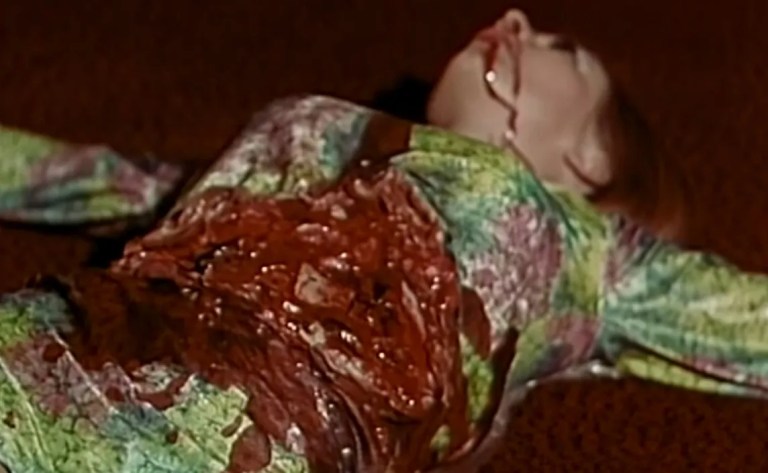
No list of gory movies could be complete without an entry from Herschell Gordon Lewis, the Godfather of Gore. Lewis is cited as creating the splatter subgenre with 1963’s Blood Feast, but The Wizard of Gore from 1970 is easily one of his bloodiest films. The movie is about a magician named Montag the Magnificent who claims to be performing an illusion when he brutally mutilates his female assistants on stage. Whether he’s performing a harmless trick or not, audiences are treated to acts such a disemboweling with a chainsaw, removing a brain with a large spike, pulling out guts with a sword down a throat, and more.
12. Hostel (2005)

Writer/director Eli Roth was instrumental in reviving widespread interest in splatter movies in the early and mid-2000s. His second film, Hostel, is the quintessential film in a new wave of splatter dubbed “torture porn.” Backpackers and tourists in Slovakia are kidnapped, and clients pay for the opportunity to torture and kill the kidnapped people using any means they can imagine. People are stabbed, bludgeoned, shot, sliced, and dismembered throughout much of the film’s runtime. The gore is debatably gratuitous to the point of ridiculousness in Hostel, but that could be by design. Eli Roth enjoys sewing a thread of dark humor into his movies.
11. Demons (1985)

Directed by Lamberto Bava, son of Italian master of horror Mario Bava, Demons is an ultra-bloody movie about a demonic curse unleashed inside a sealed movie theater. After a woman receives a cut on her cheek from a mysterious mask, she turns into a fanged, demonic monster during a transformation involving plenty of puss and blood. The people she attacks also become demons, and the carnage escalates. People are slashed, smashed, bitten, and ripped apart, and that’s just the start. One of the film’s gory highlights shows a fully-formed demon emerging from the back of an unfortunate movie-goer.
10. Zombie (1979)

Herschell Gordon Lewis isn’t the only filmmaker who can claim the title of the Godfather of Gore. That name has also been attributed to Lucio Fulci, one of Italy’s most prominent makers of brutal and transgressive films. Many of Fulci’s movies could have earned a spot on this list, but 1979’s Zombie stands out as probably his most-watched gore film.
Zombie takes place mostly on a remote island where the dead have come back to life. The rotting zombies are gory on their own, but the film also relishes in its depictions of blood and guts. Throats are ripped out, entrails are eaten, and there is an excruciating scene involving an eye and a broken door that cannot be forgotten.
9. High Tension (2003)

High Tension is an entry in a wave of brutal French films dubbed New French Extremity. The movies feature uncomfortable violence among other disturbing elements, and High Tension brings violence to the screen in massive amounts. The film follows a woman as she tries to help her best friend escape the clutches of a serial killer. The film kicks off with a home invasion involving an inventive decapitation and a geyser of a throat slashing, and it also includes an axe murder and a disemboweling before the final credits roll. Blood literally covers the screen at one point.
8. Day of the Dead (1985)
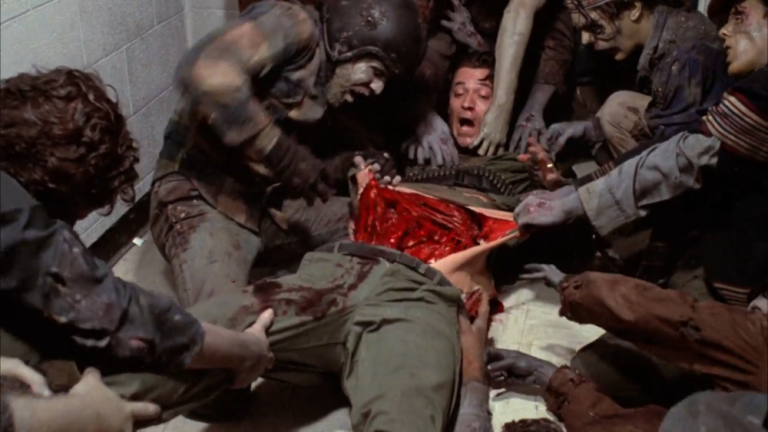
Though the term “splatter” in reference to incredibly bloody movies was coined by George Romero when discussing his zombie classic Dawn of the Dead (1978), that movie’s sequel, Day of the Dead (1985), is even more gory. Zombie movies tend to be fairly bloody to begin with, but special effects master Tom Savini really pushed the gore to new levels in this film.
Much of the movie’s early gore involves a mad scientist’s lab where viewers are treated to gut-churning sights including a zombie with no head but with its brain still attached to its spinal cord. By the end of the film, we also are treated to multiple people being ripped apart in agonizingly slow and brutal zombie ways. One highlight is when a man has his head slowly pulled off his body while screaming, and his vocal cords are stretched so that his scream gets higher and higher pitched.
7. Cannibal Holocaust (1980)

Cannibal Holocaust isn’t just gory in a “film entertainment” kind of way, it’s a movie that remains controversial decades later due to its gruesome content that crosses over into real life. The movie is shot partly in a pseudo-documentary style reminiscent of the “mondo” films that gained popularity in the 1960s, many of which show real-life animal cruelty. Cannibal Holocaust shows multiple animals killed on-screen, including a lengthy scene of a giant turtle being butchered.
In addition to the real animal violence, fake movie violence in the film includes amputations, decapitations, graphic sexual violence against men and women, and, of course, the eating of human flesh. The style of how the film is shot helps add to the realism of the gore effects, famously leading to director Ruggero Deodato being forced by authorities to prove his actors weren’t actually killed on screen.
6. Tokyo Gore Police (2008)
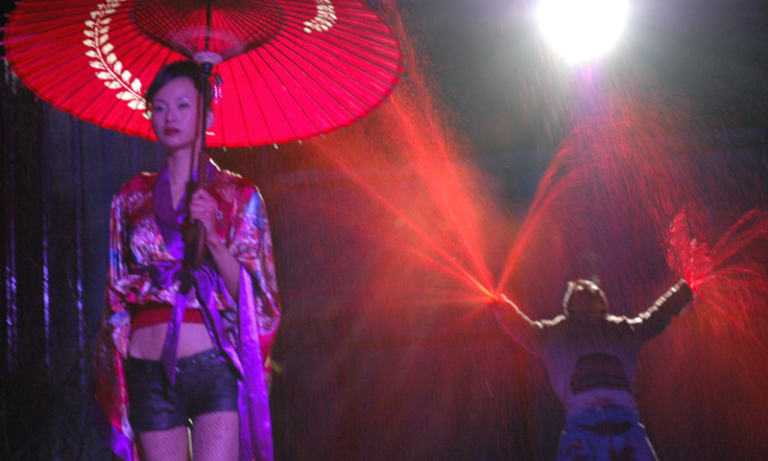
Roughly coinciding with the surge of “torture porn” in the western world, Japan had a rise in over-the-top splatter movies beginning roughly in the 2000s. In contrast to the more grim efforts coming out in other countries, Japan’s splatter movies often mix all-out comedy with their gore, leading to some of the most memorable and inexplicable scenes of bloody violence.
Tokyo Gore Police takes place in a future where technological advances allow criminals to grow weapons out of injuries on their bodies. The police hunt down these monsters, and bodies are ripped and blown apart in their ensuing battles. Describing some of this film’s scenes will never do it justice. After all, a naked woman with an alligator’s jaws in place of her legs ripping off a man’s arm is something everyone really needs to see for themselves.
5. Adam Chaplin (2011)
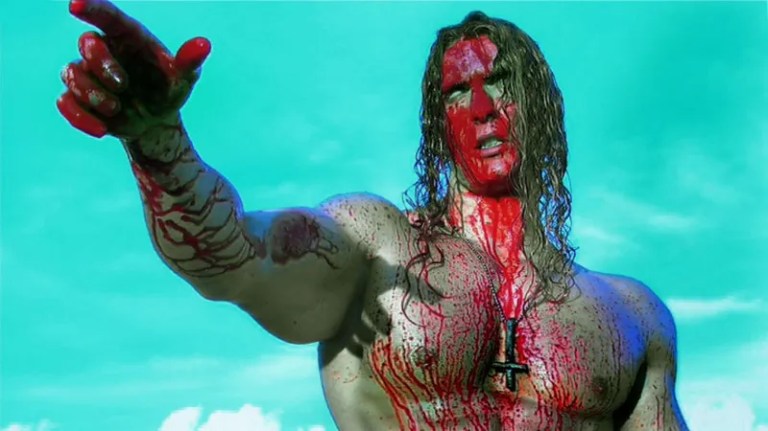
Indie filmmaker Emanuele De Santi’s fingerprints are all over the gore-drenched action horror flick Adam Chaplin. De Santi has seven different credits on the film, including writing, directing, and starring as the main character, Adam Chaplin. In the movie, Chaplin’s wife is killed by the mafia, so he summons a demonic power to aid his in his quest for vengeance. Chaplin kicks, punches, and rips his opponents apart in a series of some of the most gory fights ever put on screen. With its unique villains, perfectly muscled hero, and outlandish visual style, Adam Chaplin feels like a live-action anime in the best, most violent way possible.
4. Guinea Pig 2: Flower of Flesh and Blood (1985)

Guinea Pig is a series of gory Japanese splatter films released between 1985 and 1990. The movies are known for their copious amounts of blood and gore, and the second film in the series, Flower of Flesh and Blood, is arguably the most gruesome of the lot.
The movie starts off by proclaiming that what you’re about to see is a recreation of an actual snuff film sent to manga artist and writer Hideshi Hino. That’s all the story audiences get, and the bulk of the movie consists of a deranged man methodically dismembering a drugged woman as he waxes poetic about the nature of beauty. The man uses a saw, a chisel, and even a spoon to pull the woman apart. The film became notorious, with some people thinking it was an actual snuff film, and others mistakenly attributing it to influencing real-life murders.
3. American Guinea Pig: Bouquet of Guts and Gore (2014)

Much like Guinea Pig 2: Flower of Flesh and Blood (of which this film is clearly inspired by), American Guinea Pig: Bouquet of Guts and Gore has a very simple plot. Two women are kidnapped by a small group of men making a snuff film. Most of the movie, shot found-footage style, depicts the slow dismemberment of the women. Amputation, evisceration, eye gouging, skinning, and more are all shown in gory detail.
2. Evil Dead (2013)
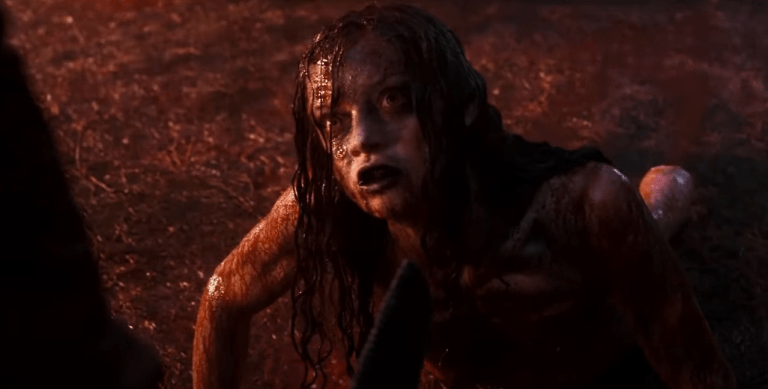
To be completely fair, any movie in the Evil Dead series could have made it onto this list. Of Sam Raimi’s originals, Evil Dead II (1987) might have the edge on gore thanks to its sheer volume of various fluids flowing freely throughout its cabin in the woods. The 2013 installment takes the blood and gore to new depths though, with blood literally raining down and soaking everything on-screen.
The story in the 2013 version is essentially the same as the 1981 version. A group people unleash a demonic entity in a secluded cabin, they become possessed, and they slaughter each other. There are great twists to keep longtime fans on their toes, and the movie does a great job of paying tribute to certain scenes from the original trilogy. From box cutters to nail guns to chainsaws, many implements are used to destroy the bodies of the cabin’s unfortunate occupants.
1. Dead Alive (1992)

In the eyes of many, Dead Alive (originally titled Braindead) is the goriest film of all time. Peter Jackson (director of the Lord of the Rings films) began his career in wonderfully trashy horror movies, and this is his most heralded. In the movie, a quiet man does his best to contain a zombie outbreak started when his mother is bitten by a Sumatran Rat-Monkey. The situations are gloriously ridiculous, leading to characters having to say memorable lines such as, “your mother ate my dog!” The final scenes involve some of the most epic zombie slaughtering of all time, culminating in a lawnmower bloodbath for the ages.
Frequently Asked Questions
What are gore films called?
The most common term for a gore movie is “splatter.” The creation of the term “splatter cinema” is credited to George Romero for his descriptions of the bloody violence in his own movie Dawn of the Dead (1978). Later, a comprehensive definition of “splatter” was codified by author John McCarty in his book The Official Splatter Movie Guide (1989).
Why do horror movies have gore?
Gore adds an important aesthetic value to the horror movies that use it, though that value varies greatly from film to film. Outlandish, over-the-top gore seen in a movie like Dead Alive (1992) is used for comedy in what some people refer to as “splatstick.” Realistic gore seen in a movie such as Inside (2007) is used to disturb audiences in a way that makes the film exponentially more horrific than if the blood wasn’t there. Between those two extremes, a great number of horror movies use gore to both delight gorehounds and repulse everyone else.
Why do people watch gory movies?
People watch gore movies for the same reasons they watch any kind of horror movie: they enjoy it. Just like other types of horror, seeing blood and guts on-screen can provide a rush from the fear, disgust, or fascination. We know the violence and gore isn’t real, and we’re watching in a safe environment, so the experience can be exhilarating. Gore is simply a different form of horror, so for some people, gore movies are a form of escapism. Enjoying gore is not weird, and splatter movies should not be looked down on as a lesser form of horror.
For other fans of splatter, a really good gore movie is like watching a magic show. The master of practical gore effects, Tom Savini, describes himself and his fellow filmmakers as illusionists performing magic tricks. Many gorehounds love watching these types of movies because they appreciate the artistry going on behind the scenes. A really good gore effect is a beautiful thing to see, and figuring out how a surprisingly realistic effect was made is part of the fun.
Is gore a type of horror?
Short answer: Yes, gore movies are generally considered to be a subgenre of horror films. For a more thorough answer, you have to consider that blood and gore can be present in just about any type of movie, horror or otherwise. The movies with the most killing tend to be action movies and war films (with the Lord of the Rings movies containing some of the highest on-screen kill counts ever), and many of those can get quite bloody. So just because a movie is gory, that doesn’t necessarily make it a “gore movie” in the way we tend to think about them.
Consider the 1991 movie Riki-Oh: The Story of Ricky. During a fight in one scene, the titular hero Ricky knocks a guy’s eye completely out of his head, then Ricky’s opponent eviscerates himself and tries to strangle Ricky with his bloody intestines. But Riki-Oh is an action movie, not a horror movie. The difference really comes down to the intent of the film (for example, thrills and comedy versus fear and revulsion). So, even though splatter is generally considered to be within the realm of horror, there are plenty of exceptions to that rule.
Are “splatter” and “torture porn” the same thing?
No, “torture porn” is not the same as “splatter.” For the most part, torture porn refers to a specific cycle of violent movies that began in the mid 2000s. Movies like the Hostel series, the Saw series, and The Devil’s Rejects (2005) were dismissively labeled as torture porn by some commentators. Ostensibly, these movies tend to focus primarily on pain and suffering, though not all films grouped into the label fit that description. Splatter is less about pain and suffering and more about blood and guts. After all, one of the most notorious gore movies of all time, Guinea Pig 2: Flower of Flesh and Blood (1985), consciously removes explicit suffering from the equation and focuses almost solely on gore.
What was the first gore movie?
Blood Feast (1963) by director Herschell Gordon Lewis is the first gore movie. Of course, movies prior to Blood Feast showed blood to varying degrees. For example, the Japanese film Jigoku (aka The Sinners of Hell) is considered by some to be a splatter movie, and it came out in 1960. However, Blood Feast is the film that brought together everything we think about gore movies for the first time in a way that popularized the gore-movie format.